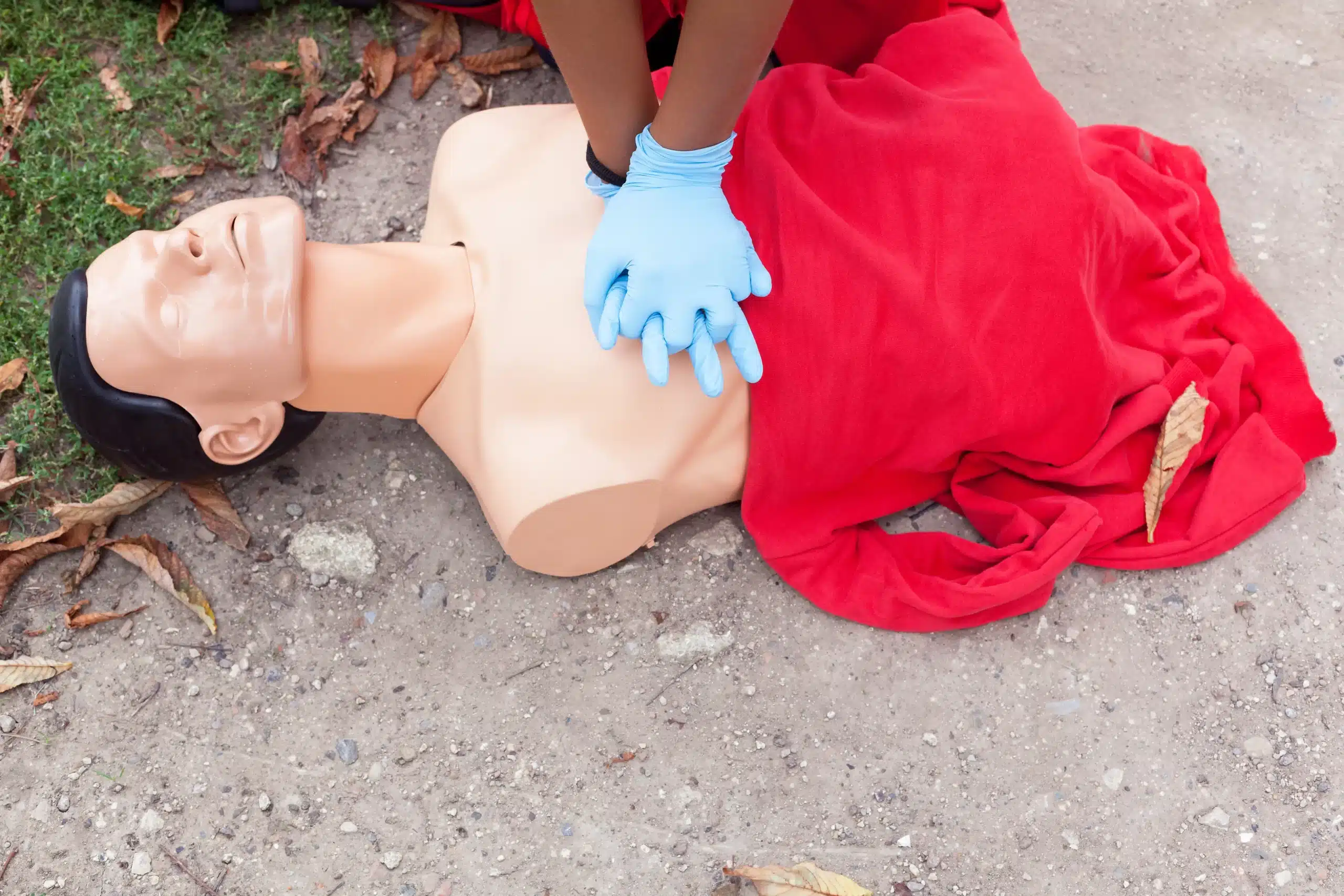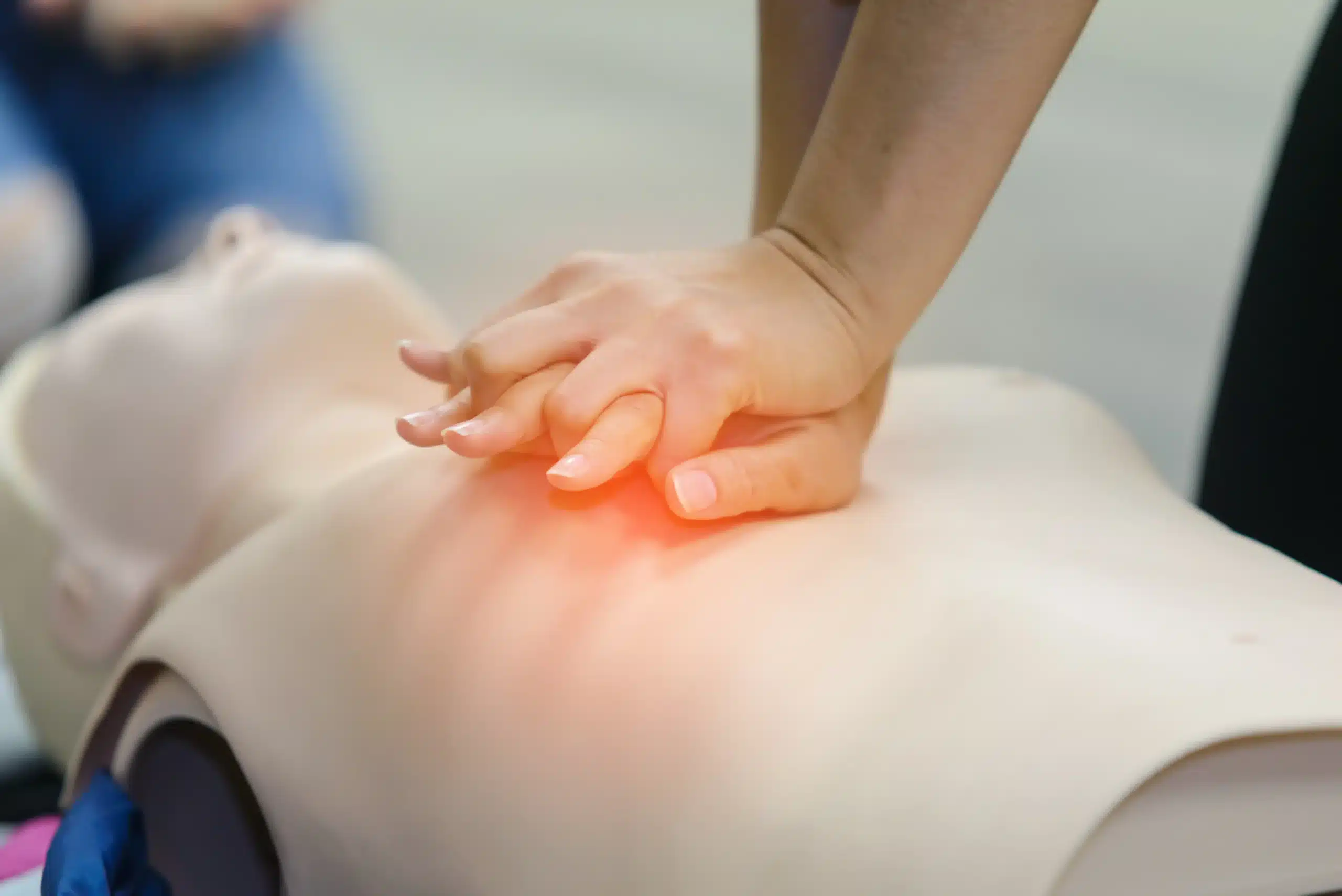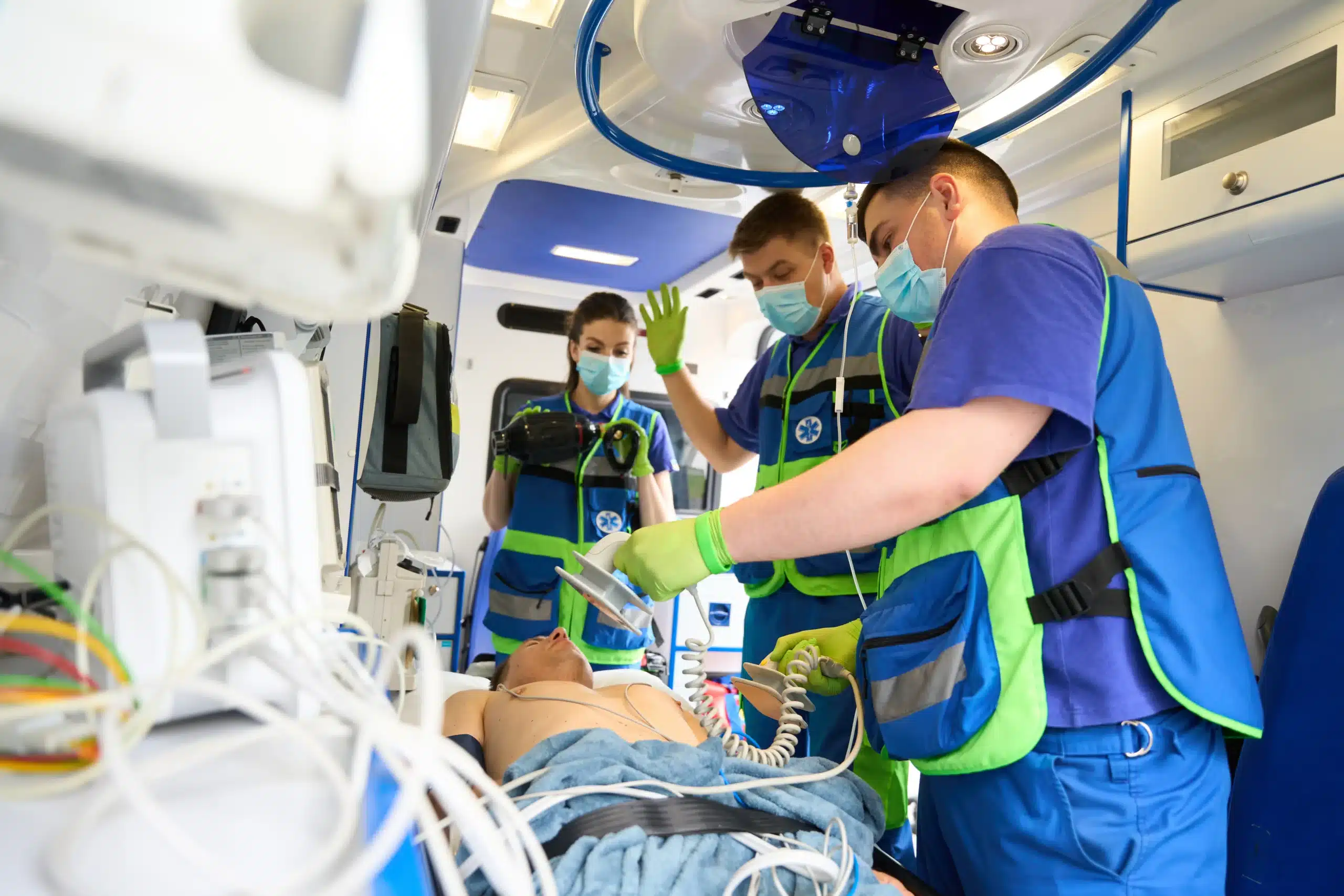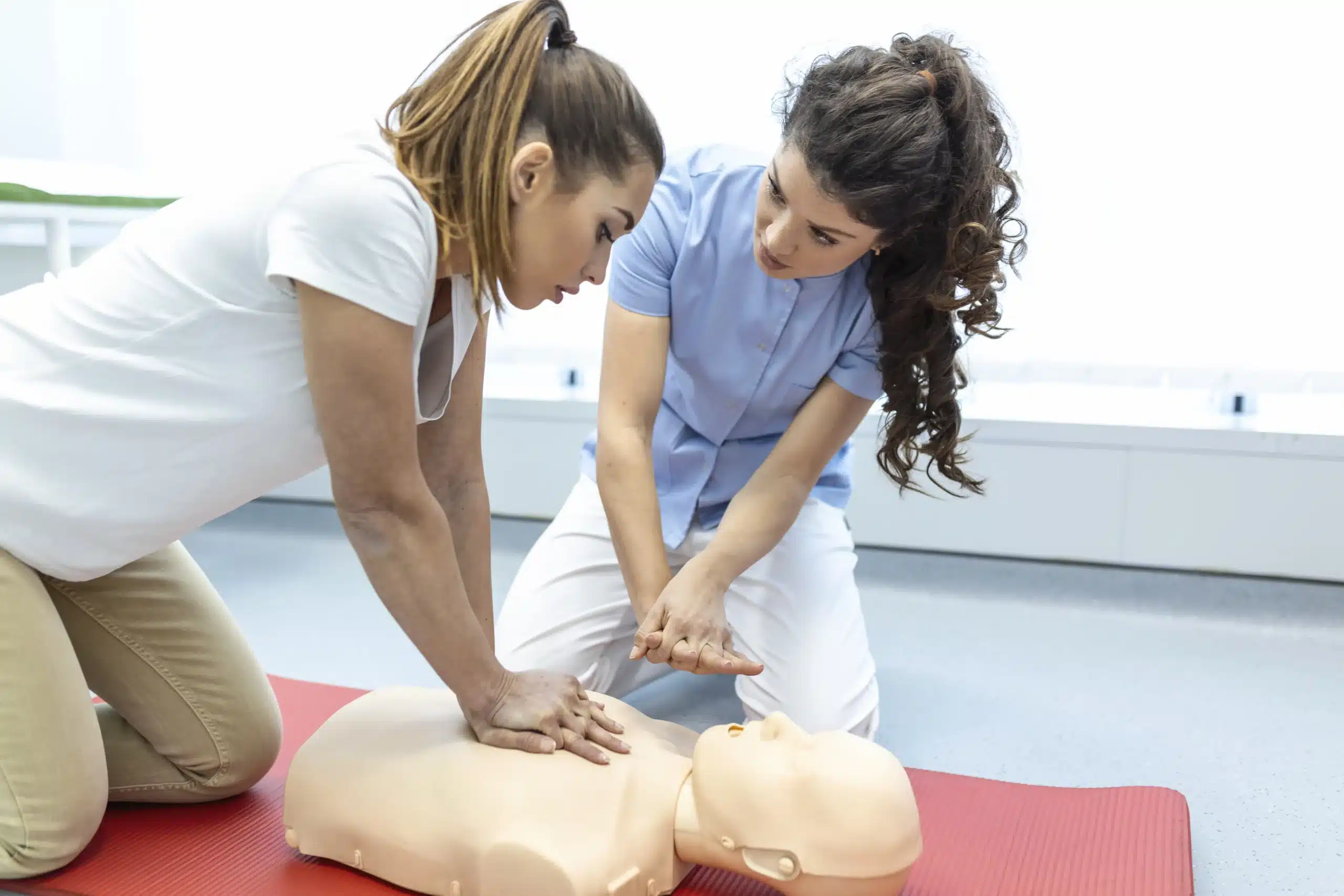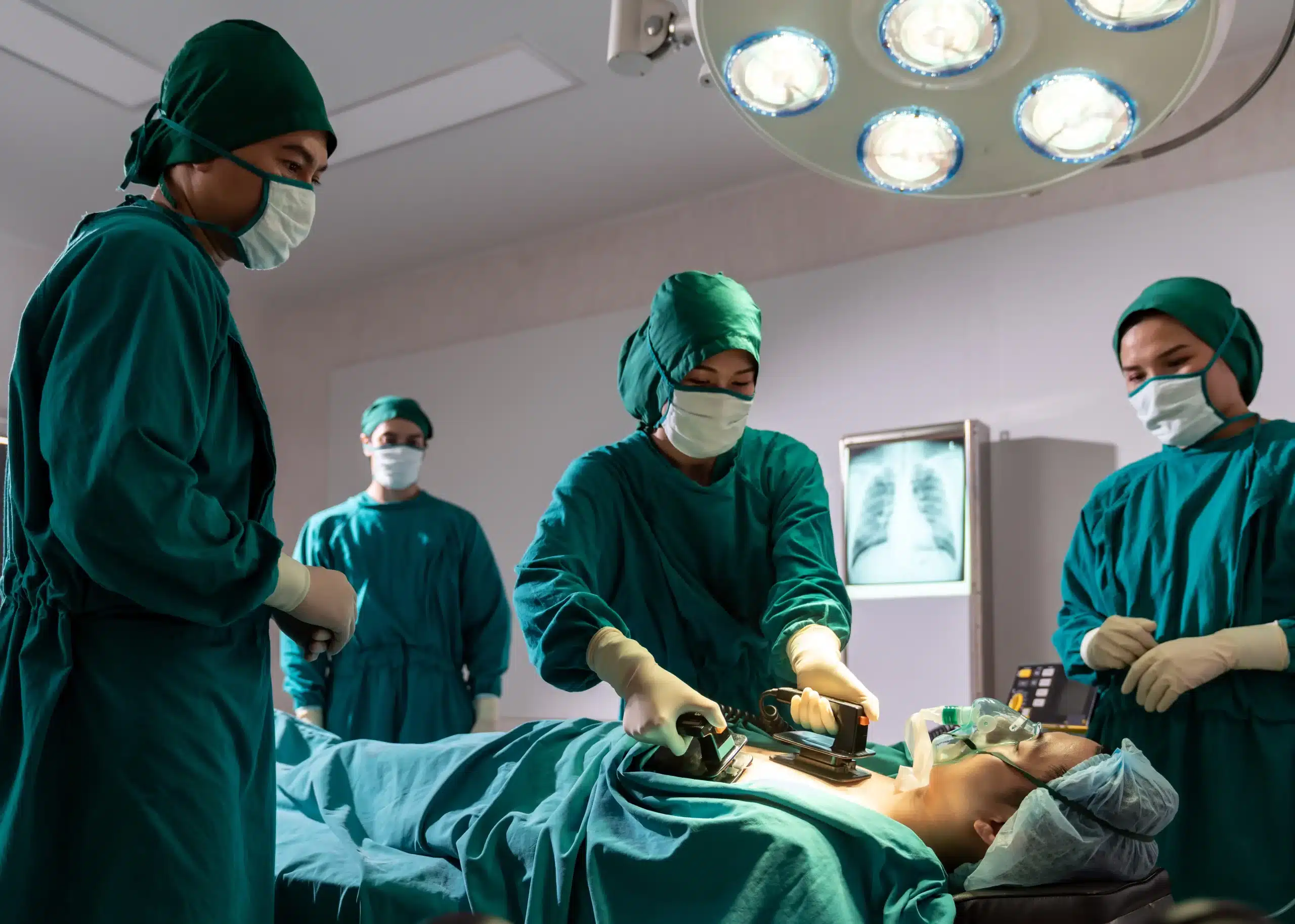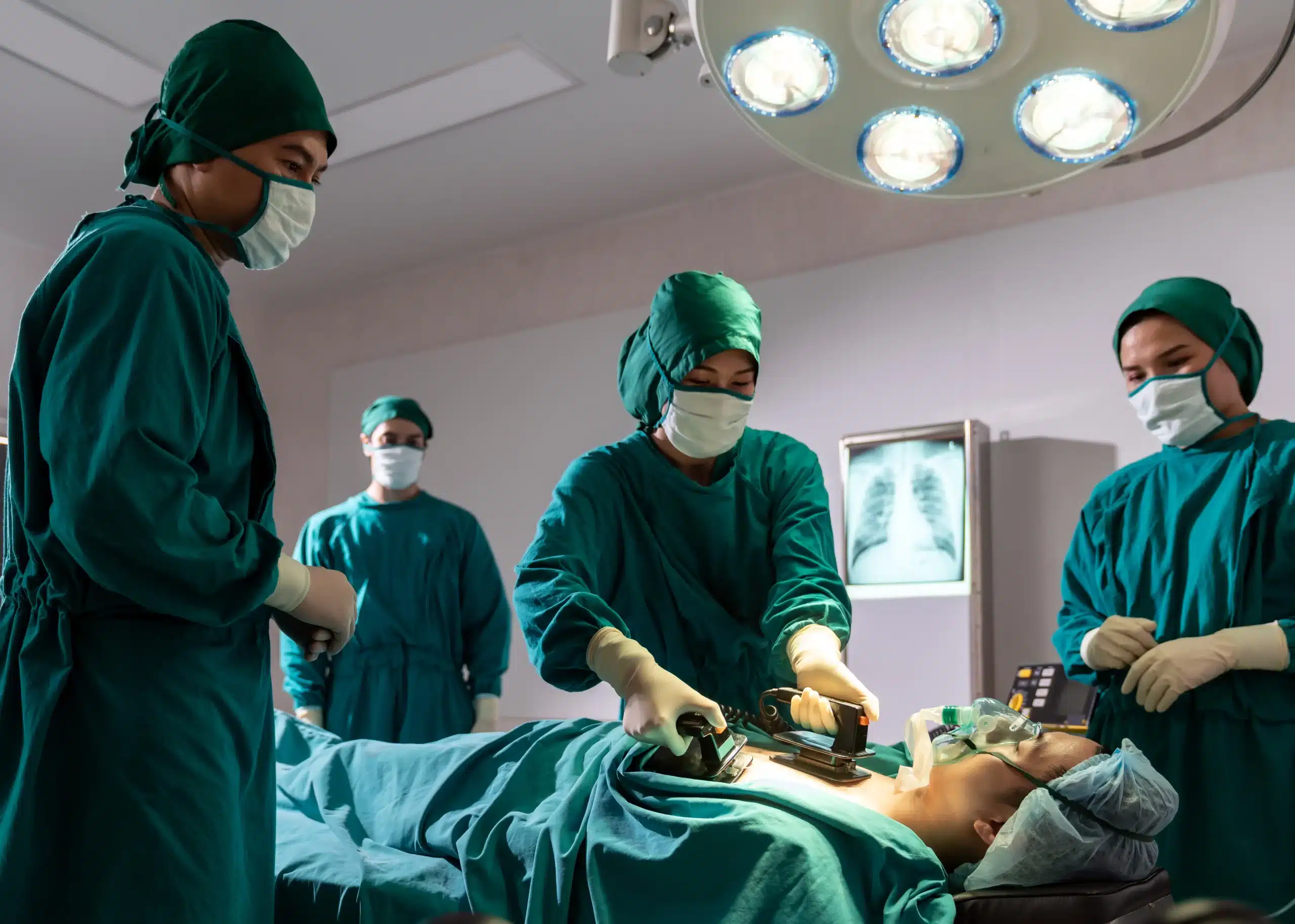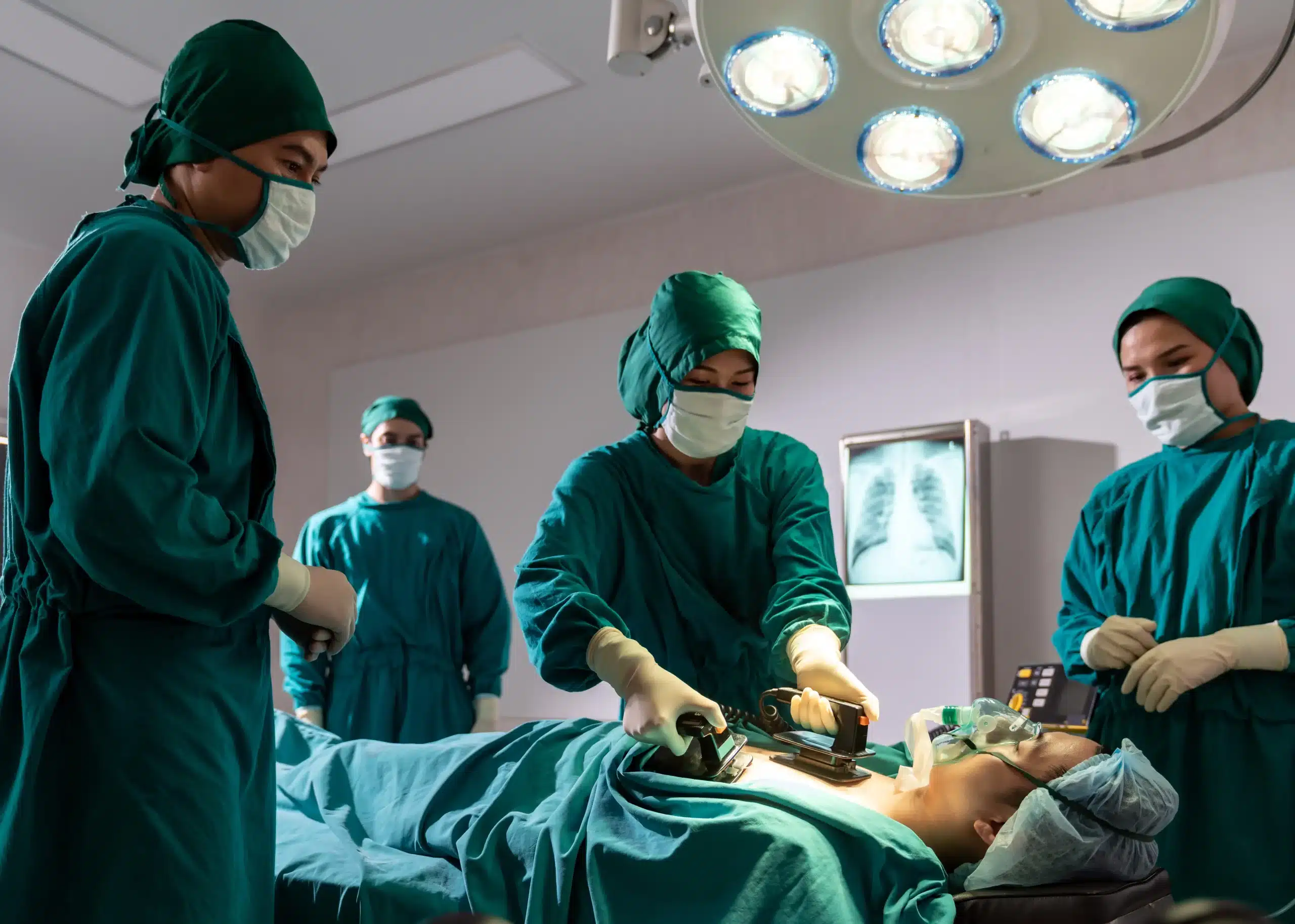Emergencies can happen anytime, anywhere. Would you know what to do if someone near you stopped breathing? CPR training empowers you to take action and potentially save a life. If you’re in San Rafael, finding the right CPR class can feel overwhelming. This guide simplifies the process, explaining the different types of CPR certification, the costs involved, and how to choose the right instructor. We’ll also explore why CPR in San Rafael is so vital for building a safer community. Let’s get started.
Key Takeaways
- CPR knowledge saves lives: Learning CPR, whether you’re a healthcare professional or not, empowers you to respond effectively in emergencies and significantly improves survival rates.
- Find the right CPR training for you: Explore different course formats (in-person, online, blended) and training providers to find a class that matches your learning style, schedule, and specific needs.
- Maintain your CPR skills: CPR certification typically lasts two years. Regularly refresh your knowledge and skills to stay prepared and confident in your ability to respond to emergencies.
What is CPR and Why Does it Matter in San Rafael?
Cardiopulmonary resuscitation (CPR) is a lifesaving technique used when someone’s heartbeat or breathing stops. It combines chest compressions and rescue breaths to keep blood and oxygen flowing to vital organs until professional help arrives. The American Heart Association emphasizes that effective CPR can double or triple a victim’s chance of survival, making it a vital skill for everyone, especially in a community like San Rafael.
In San Rafael, CPR training is especially important. Immediate CPR can dramatically improve survival rates, so it’s crucial for community members to be prepared. Having trained individuals nearby can make a real difference, allowing for a faster response in emergencies and potentially saving lives. Learning CPR empowers you to act quickly and decisively when every second counts. It also creates a stronger sense of community responsibility. By becoming CPR certified through a provider like San Rafael CPR Classes, you contribute to a safer environment for everyone. You’ll be equipped to help your family, neighbors, and community members when they need it most.
CPR Training: What are My Options?
So, you’re ready to learn CPR—fantastic! Figuring out which course is right for you can feel a little overwhelming with all the choices out there. This section breaks down the most common types of CPR training available in San Rafael.
BLS (Basic Life Support)
BLS certification is the foundation for anyone in healthcare. These courses equip healthcare providers with the skills to respond to life-threatening emergencies, including CPR, using an AED, and relieving choking. BLS classes emphasize teamwork and high-quality CPR, both crucial for positive patient outcomes. Many providers, including San Rafael CPR Classes, offer group discounts for BLS training, making it easier to train your whole team.
ACLS (Advanced Cardiovascular Life Support)
ACLS certification takes CPR training a step further. Designed for healthcare professionals, ACLS courses build upon the basics of BLS and cover more advanced life-saving techniques. Think managing airways, recognizing and treating strokes, and understanding complex cardiovascular emergencies. These
PALS (Pediatric Advanced Life Support)
If you work with children, PALS training is essential. These courses focus on the specific needs of infants and children facing medical emergencies. San Rafael CPR Classes offers a comprehensive PALS course covering everything from respiratory emergencies to cardiac events in young patients. It’s a vital certification for anyone working in pediatrics, childcare, or other fields where they might encounter pediatric emergencies.
First Aid & AED Training
First Aid and AED training are incredibly valuable for everyone, not just healthcare professionals. These courses teach you how to respond to various emergencies, from minor cuts and burns to more serious situations like seizures and allergic reactions. Learning how to use an AED (automated external defibrillator) can significantly increase someone’s chance of survival during sudden cardiac arrest. Many providers offer combined CPR and AED certification, giving you a well-rounded skillset to handle various emergencies. These certifications are often valid for two years, so remember to recertify to keep your skills current.
Best CPR Training Providers in San Rafael
Finding the right CPR training can feel overwhelming, so I’ve put together a quick overview of some popular options in San Rafael. Remember to always verify information and check reviews before committing to a class.
San Rafael CPR Classes
San Rafael CPR Classes offers a comprehensive range of courses, from BLS and ACLS to PALS and First Aid. They also provide specialized training like the RQI program for healthcare professionals and EMSA Child Care Health & Safety certification. Their focus on flexible scheduling and a low price guarantee makes them a strong contender. You can explore their course catalog for more details. For a complete guide to CPR certification in San Rafael, check out their blog post.
American Red Cross
The American Red Cross is a well-known provider of CPR and AED training in San Rafael. They emphasize the importance of refresher courses, noting that skills can decline even within months of initial certification. Learn more about their CPR/AED classes.
Safety Training Seminars
Safety Training Seminars offers various American Heart Association courses, including BLS, ACLS, PALS, First Aid, and CPR training in San Rafael. They seem like a good option if you’re looking for AHA-compliant certification. Visit their website for class schedules and more information.
Heart Wise Emergency Response Training
If you’re considering group training options, Heart Wise Emergency Response Training offers CPR and AED courses for individuals and groups. They provide cost-effective solutions, especially for employers training their teams. You can find them and compare pricing on Thumbtack.
BLS Test Center
BLS Test Center focuses on providing affordable CPR, AED, and First Aid certification. They offer online certification options, a convenient choice for busy schedules. Their website lists pricing and certification details.
Bay Area CPR
Bay Area CPR offers a range of CPR and first-aid classes in San Rafael, covering BLS, ACLS, PALS, and general First Aid. They serve the broader San Francisco Bay Area, so they might be a good choice if you need options in multiple locations. Learn more about their San Rafael CPR classes.
Compare CPR Costs & Certification
So, you’re ready to get CPR certified—fantastic! Naturally, one of your first questions might be, “How much will this cost?” Let’s break down the costs, extra fees to watch out for, and how long your certification will remain valid.
Course Costs: What’s the Range?
CPR training costs in San Rafael, Corte Madera, and Fairfax vary depending on several factors. The type of course, the training provider, and the class format (online, in-person, group) all play a role. A basic two-hour CPR and AED course can average around $35 per person, while group rates for businesses often offer a lower per-person cost. For example, a group of eight might pay around $280 total for a two-hour course, according to Thumbtack. You can also find more affordable options, with some providers like BLS Test Center offering combined CPR/AED/First Aid certification for $24.99 and BLS Healthcare Provider certification for $34.99. It’s always a good idea to compare prices to find the best value.
Watch Out for Extra Fees
While the initial course fee is the primary cost, be sure to ask about any potential extra fees. Some providers might charge additional fees for things like certification cards, course materials, or online access codes. At San Rafael CPR Classes, we believe in transparent pricing. We offer a low price guarantee and clearly outline all costs upfront, so there are no surprises. We offer a range of courses, from BLS and ACLS to PALS and First Aid, plus specialized programs like our RQI program for healthcare professionals and EMSA Child Care Health & Safety training. You can find a CPR class that fits your specific needs.
Certification: How Long is it Good For?
Most CPR certifications are valid for two years. However, it’s important to remember that your skills can start to fade even within a few months of your initial training, as highlighted by the American Red Cross. That’s why staying up-to-date with the latest guidelines is crucial. Refresher courses are a smart way to keep your skills sharp and your confidence high.
CPR Instructors: What Makes a Good One?
Choosing the right CPR instructor is just as important as choosing the right class. A great instructor can make all the difference in how much you learn and how confident you feel performing CPR. So, what should you look for? Here’s what to consider:
Check Credentials & Certifications
First things first, check those credentials. Your instructor should have up-to-date certifications from a nationally recognized organization like the American Heart Association (AHA) or the American Red Cross. San Rafael CPR Classes offers AHA-compliant courses, so you know they’re following the latest guidelines. Instructors certified by reputable organizations show they’re committed to high standards. You can usually find this information on the training center’s website or by asking the instructor. In Home CPR also lists certifications from different organizations, including ASHI, Red Cross, and AHA, giving you several options.
Healthcare Experience: Does it Matter?
While it’s not always a requirement for CPR certification, healthcare experience can be a big plus. Instructors with a healthcare background often bring real-world know-how to the class, sharing practical insights and a deeper understanding of emergencies. They can answer your questions in a way that connects what you’re learning to what you might experience in a real emergency. BLS certification courses in San Rafael, like those offered by San Rafael CPR Classes, follow AHA guidelines, and instructors with healthcare experience can often provide more context and practical examples.
Teaching Style & Expertise
Beyond certifications and experience, think about the instructor’s teaching style. CPR is a hands-on skill, so clear instruction is key. Look for instructors who create a comfortable learning environment where you feel good asking questions. A good instructor will give helpful feedback and adjust their teaching to fit different learning styles. Because CPR skills can fade over time, an engaging instructor who focuses on practical application and knowledge retention is essential. Safety Training Seminars, a woman-owned AHA Training Center in San Rafael, prioritizes high-quality instruction, showing their dedication to effective teaching. The American Red Cross also stresses how important skilled instructors are for effective learning.
CPR Class Formats: Find What Works for You
Finding the right CPR class format is key to successful learning. Think about your learning style, schedule, and what works best for you. Here’s a breakdown of the most common options in San Rafael:
In-Person CPR Classes
If you learn best by doing, in-person CPR classes offer a structured, interactive experience. You’ll get real-time feedback from certified instructors, practice on mannequins, and ask questions in a supportive group setting. This format allows for personalized instruction and immediate clarification on any confusing points. For on-site training, companies like In Home CPR bring the CPR training to your San Rafael home or business.
Online & Blended Learning
If your schedule is tight or you prefer self-paced learning, online or blended learning CPR courses might be a good fit. Online courses offer maximum flexibility, allowing you to complete the coursework from anywhere, at any time. Blended learning combines online modules with in-person skills sessions, offering a balance of independent study and hands-on practice. San Rafael CPR Classes offer various course formats, including in-person, blended, and online options, allowing you to choose the best fit for your schedule and learning preferences.
Group Training for Businesses
Need to train your whole team? Group training is a smart and efficient way to get everyone CPR certified. Many providers offer discounted rates for groups, making it a budget-friendly option. Thumbtack notes that group training can cost around $280 for eight students. This not only ensures a safer work environment but also equips your team to handle emergencies effectively.
What Happens in a CPR Class?
So, you’ve signed up for a CPR class—great! Now, you’re probably wondering what to expect. CPR classes blend theory and hands-on practice to prepare you for real-life emergencies. Let’s break down what a typical class entails.
How Long Does it Last & What’s Covered?
CPR classes typically run anywhere from two to a little over four hours. The length depends on the specific type of class and the material covered. For example, a basic CPR course for the general public will likely be shorter than a BLS certification course for healthcare providers. This flexibility lets you choose a class that fits your schedule and learning goals. Most classes cover core CPR skills, AED use, and choking relief for adults, children, and infants. Some courses, like the EMSA Child Care Health & Safety program, also include specialized training relevant to specific professions. You can find a helpful directory of CPR training centers in Northern California to explore more options.
Hands-on Practice & Testing
CPR classes aren’t just about lectures. You’ll learn through a mix of interactive discussions, real-life scenarios, and—most importantly—hands-on practice. Expect to work with training mannequins, which often provide voice-assisted feedback to help you perfect your technique. This realistic practice is key to building confidence and ensuring you can perform CPR effectively in a stressful situation. For medical professionals looking for efficient certification renewal, consider exploring RQI classes. You’ll also be tested on your practical skills. While an instructor won’t be right there during the test itself, support is usually available by phone if you need it.
Class Materials & Resources
Don’t worry about bringing a bunch of supplies—CPR classes typically provide all the necessary materials. This usually includes a student handbook and access to online resources. Upon completion of a certified course, like the ASHI two-year certification for non-medical professionals, you’ll receive a certification card valid for two years. Check with your specific training provider, such as San Rafael CPR Classes, to confirm what resources are included in your chosen course. They also offer a low price guarantee, so you can be confident you’re getting a great value.
Which CPR Class is Right for Me?
Choosing the right CPR class depends on your background and goals. Let’s explore the options to help you find the perfect fit.
For Healthcare Professionals
Doctors, nurses, medical students, and other healthcare providers should enroll in a BLS (Basic Life Support) certification course. These courses, often based on American Heart Association guidelines, cover essential skills like CPR, using an AED, and relieving choking. BLS certification also covers more advanced topics relevant to medical settings. San Rafael CPR Classes offers BLS certification to prepare you for emergencies in your professional life. As you advance in your career, consider ACLS (Advanced Cardiovascular Life Support) and PALS (Pediatric Advanced Life Support) training as well.
For Childcare Providers & Educators
If you work with children, explore specialized CPR training like the EMSA (Emergency Medical Services Authority) Child Care Health & Safety course. This program focuses on the specific needs of infants and children during emergencies. The RQI (Resuscitation Quality Improvement) program is another excellent option, offering a flexible, skills-based approach to maintaining your CPR competency. These courses give you the confidence to respond effectively to emergencies involving kids, fostering a safer environment.
For Everyday People & Workplace Safety
Even without a healthcare or childcare career, learning CPR and First Aid is invaluable. These skills prepare you for emergencies at home, in public spaces, or at your workplace. CPR and First Aid training can truly make a difference. San Rafael CPR Classes offers various course formats—in-person, blended learning, and online—to fit your schedule. Their CPR certification guide offers more information on the options available in San Rafael.
Affordable CPR Training: Make it Happen
Getting CPR certified can feel like a significant expense, but several options can make training more affordable. Knowing where to look and what to ask can save you money while gaining these essential lifesaving skills.
Discounts & Promotions
Many CPR training providers offer discounts and promotions throughout the year. Keep an eye out for special deals during CPR Awareness Week or other health-related observances. Some providers may also offer lower prices for students, seniors, or groups. Checking local community centers and organizations like the American Red Cross can also uncover discounted training options. A little research can go a long way in finding a great deal. For example, a two-hour Heart Wise Emergency Response Training course, including CPR and AED training, is around $35 per person. Employers can often book group sessions for a minimum of eight students at an average cost of $280, making it a cost-effective option for workplace training. (Thumbtack)
Group & Corporate Rates
If you’re training with friends, family, or coworkers, group discounts can significantly lower the cost per person. Many providers, including San Rafael CPR Classes, offer special rates for groups booking training sessions together. This is particularly helpful for businesses looking to certify their employees in CPR, BLS, ACLS, and PALS. Contacting providers directly to inquire about group rates for your team is always a good idea.
Low Price Guarantees & Price Matching
Some CPR training organizations offer a low price guarantee or price matching. This means they’ll either match or beat a competitor’s price, ensuring you get the best value for your training. Providers often feature these guarantees, so check their websites or call them to learn about their pricing policies. Bay Area CPR is one example of a provider offering various courses, including BLS, ACLS, PALS, and First Aid, often with competitive pricing. Don’t hesitate to ask about price matching—it could save you money. Finding affordable, high-quality CPR training is entirely possible with a bit of research and smart planning.
CPR Training: How it Makes Our Community Safer
CPR training does more than just teach a life-saving skill—it builds a safer, more prepared community here in San Rafael. When more people know how to respond to emergencies, we all benefit. It creates a network of support, where neighbors, colleagues, and even strangers can step in during critical moments.
Equipping individuals with CPR and first-aid skills empowers them to take action. It transforms bystanders into potential lifesavers, ready to respond effectively when every second counts. This sense of empowerment ripples through our community, fostering a culture of preparedness and encouraging proactive responses to medical emergencies. You can find local CPR training options through resources like Thumbtack, which lists qualified instructors in our area.
The availability of comprehensive training programs, like those offered by San Rafael CPR Classes, plays a crucial role. With options ranging from basic CPR and first aid to advanced certifications like ACLS and PALS, there’s a course for everyone. This accessibility makes it easier for community members to find training that fits their needs, contributing to a more prepared and responsive community.
Modern training programs, such as the American Heart Association’s RQI program, are also key to improving community safety. RQI offers a streamlined and efficient way for healthcare professionals to stay up-to-date on their certifications, ensuring they have the most current knowledge and skills. This strengthens the network of skilled responders within our community, particularly in medical settings. Bay Area CPR also highlights the importance of these essential skills.
Finally, remember that maintaining CPR skills is an ongoing process. Because certification typically lasts two years, regular recertification is essential. Even if you’ve been trained, refreshing your skills ensures you’re always prepared to respond confidently and effectively. The American Red Cross offers resources and information on the importance of CPR recertification. By prioritizing ongoing training, we collectively contribute to a safer, more resilient community.
Related Articles
- CPR Training in Corte Madera: Your Complete Guide – San Rafael CPR Classes
- Why CPR is Important in Healthcare – San Rafael CPR Classes
- CPR Certification Near Me: A Practical Guide – San Rafael CPR Classes
- First-Aid Training in San Rafael: A Complete Guide – San Rafael CPR Classes
- CPR Classes in Fairfax: Your Complete Guide – San Rafael CPR Classes
Frequently Asked Questions
What’s the difference between BLS, ACLS, and PALS?
BLS (Basic Life Support) is the foundational CPR course for healthcare providers and teaches core lifesaving skills. ACLS (Advanced Cardiovascular Life Support) builds upon BLS, covering more complex cardiovascular emergencies and is designed for experienced healthcare professionals. PALS (Pediatric Advanced Life Support) focuses specifically on the emergency care of infants and children.
How much does CPR training cost in San Rafael?
The cost of CPR training varies depending on the course type, provider, and format. Basic CPR/AED courses can start around $25, while more advanced certifications like BLS or PALS typically cost more. Group discounts and online options can often lower the price. Always compare prices from different providers and ask about any extra fees before registering.
How long is CPR certification valid, and why is recertification important?
Most CPR certifications are valid for two years. However, skills and knowledge can decline even within months. Recertification ensures your skills stay sharp and you’re up-to-date with the latest guidelines, maximizing your ability to respond effectively in an emergency.
What should I look for in a CPR instructor?
Look for instructors with current certifications from reputable organizations like the American Heart Association or the American Red Cross. While not always required, healthcare experience can be a valuable asset. A good instructor will also have a clear teaching style, create a comfortable learning environment, and provide helpful feedback.
What are my options for CPR class formats?
You can choose from in-person classes, online courses, or blended learning, which combines online modules with in-person skills sessions. In-person classes offer hands-on practice and direct interaction with instructors, while online courses provide flexibility for busy schedules. Blended learning offers a balance of both. Group training is also available for businesses and organizations.
